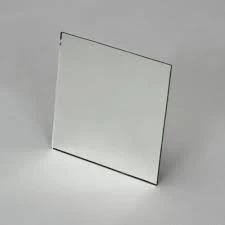

Understanding the Cost of Insulated Glass per Square Foot
Insulated glass, often referred to as double-glazing or triple-glazing, is an essential component in modern construction and renovation projects. Its primary function is to enhance thermal efficiency by reducing heat loss, thereby contributing significantly to energy savings in residential and commercial spaces. As the demand for energy-efficient solutions increases, it is vital to understand the costs associated with insulated glass, particularly the cost per square foot, which can influence overall project budgets.
What is Insulated Glass?
Insulated glass units (IGUs) consist of two or more glass panes separated by a spacer and sealed to create an air (or gas) space between them. This design minimizes the transfer of heat, making it more effective than single-pane glass. The insulating properties of this type of glass help maintain a stable indoor temperature, leading to reduced heating and cooling costs over time.
Factors Influencing Cost
1. Type of Glass The type of glass used significantly impacts the cost. Standard clear glass is typically less expensive than low-emissivity (Low-E) glass, which has a special coating that reflects heat. Other variants, such as tempered or laminated glass, may also incur higher costs due to their added strength and safety features. 2. Thickness and Size The thickness of the glass panes can influence the cost per square foot. Thicker panes offer better insulation but are more expensive. Similarly, larger insulated glass units will cost more than smaller ones, which translates to a higher cost per square foot if the area to cover is substantial.
3. Spacers The materials used for spacers can affect the insulation's effectiveness and the overall cost. Warm-edge spacers are generally more expensive but reduce thermal bridging, thereby enhancing energy efficiency.
4. Gas Fill Many insulated glass units are filled with argon or krypton gas, which improves thermal performance. The inclusion of these gases increases the price of the unit, contributing to the overall cost per square foot.

5. Local Market Conditions Regional pricing variations may affect the cost of insulated glass. Factors such as the availability of materials, labor rates, and market demand can lead to fluctuations in price across different locations.
6. Installation Costs The cost per square foot of insulated glass does not include installation expenses. Professional installation is recommended to ensure optimal performance, which can significantly add to the overall expense.
Average Cost
As of the latest data, the cost for insulated glass generally ranges from $5 to $15 per square foot, excluding installation. The average cost for basic double-glazed units with standard glass typically falls around $6 to $8 per square foot. However, for triple-glazed units, or those using premium glass types, prices can rise to between $10 and $15 per square foot. It is essential to obtain quotes from multiple suppliers to understand the pricing in your area fully.
Return on Investment
While the initial costs for insulated glass may appear high, it is essential to consider the long-term savings that can be gained through increased energy efficiency. Utilizing insulated glass can lead to substantial reductions in energy consumption, resulting in lower utility bills. Additionally, many regions offer tax incentives or rebates for energy-efficient upgrades, further offsetting the costs.
Conclusion
Investing in insulated glass can be a wise decision for homeowners and builders looking to enhance energy efficiency and comfort in their spaces. Understanding the various factors influencing the cost per square foot is crucial for making informed choices. By considering factors such as glass type, size, and local market conditions, individuals can budget effectively and reap the benefits of improved insulation and long-term energy savings. Whether for new construction or retrofitting existing windows, insulated glass represents a valuable investment in the future of our homes and buildings.